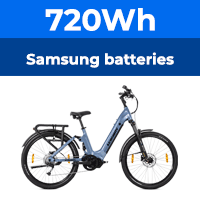Hello there,
I'm looking to use warning signal for my bike, but with a very minimalist set up (less visible is better). So I'm thinking about using these led strip:

HobbyKing R/C Hobby Store : High Density Waterproof LED Flexible Strip - Yellow (1mtr)
Combined with a car signal controller:
Load Resistors LED Indicators Flash Rate Controllers | eBay
These led strip are very bright and I'm sure I'll be noticed on the road. But I'm don't know about the best way to make them blink?
Would the resistor work?
ps: sorry I have very limited knowledge in electronic.
I'm looking to use warning signal for my bike, but with a very minimalist set up (less visible is better). So I'm thinking about using these led strip:

HobbyKing R/C Hobby Store : High Density Waterproof LED Flexible Strip - Yellow (1mtr)
Combined with a car signal controller:
Load Resistors LED Indicators Flash Rate Controllers | eBay
These led strip are very bright and I'm sure I'll be noticed on the road. But I'm don't know about the best way to make them blink?
Would the resistor work?
ps: sorry I have very limited knowledge in electronic.








